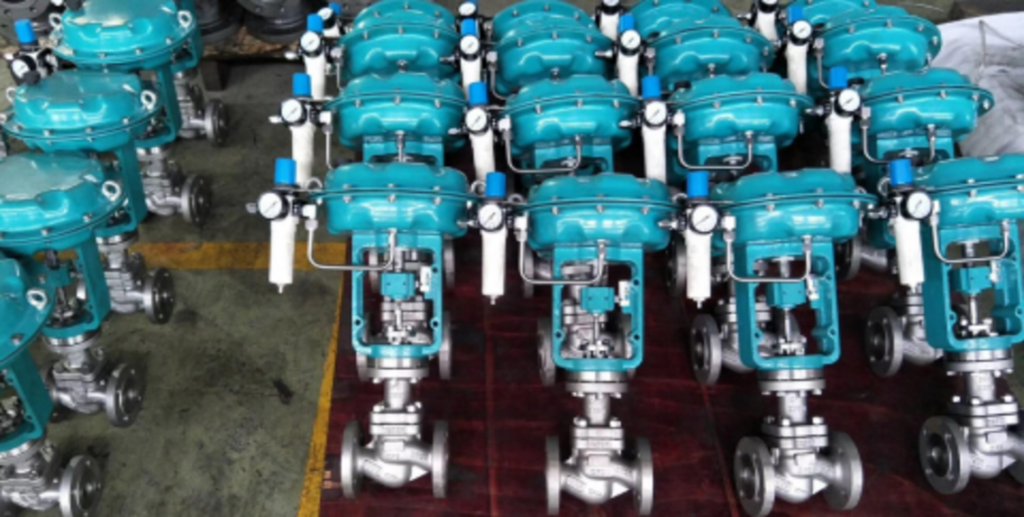
In the industrial process where pressure regulation is critical, Safety valves prevent catastrophic accidents by relieving excess pressure from systems and equipment. It is a crucial safety device used in industrial systems to prevent dangerous pressure build-ups.
What is a Safety Valve?
A safety valve is a type of relief valve or pressure relief valve(PRV) used to control or limit the pressure in a system. The major purpose of the valve is to maintain the set pressure and relieve any kind of excess pressure occurring in the unit, to avoid any catastrophic failure. It’s installed in machines like boilers or pipelines to prevent them from getting too much pressure.
When the pressure inside the machine gets too high, the valve opens up automatically. This lets out some of the extra pressure, kind of like letting air out of a balloon when it’s too full. Once the pressure is back to normal, the valve closes again, keeping everything safe and working properly.
Purpose of safety valve
- The primary function of a safety valve is to relieve excess pressure from a system or vessel. When the pressure inside the system exceeds a predetermined setpoint, the valve automatically opens to discharge fluid or gas. This action reduces the pressure to a safe level. Once the pressure decreases, the valve closes to restore normal operation.
- Safety Valves provide protection to equipment, processes, and personnel by preventing overpressure situations that could lead to catastrophic failure or accidents. They offer reliable operation, automatically open to relieve excess pressure when needed and close once the pressure returns to safe levels.
Safety valves come in various types; each type operates differently but serves the common purpose of pressure relief.
- Steam safety valve- It is a specialized type of safety valve designed specifically for steam systems. Its primary function is to protect boilers, steam vessels, and associated equipment from overpressure conditions that could lead to catastrophic failures or explosions. By relieving excess pressure, steam safety valves prevent damage of boilers, piping, and other components.
- Thermal safety valve– It is a type of safety valve that is designed to protect equipment and personnel from overpressure caused by excessive temperature. The valve is equipped with a mechanism which senses the pressure within the system and helps to protect against the risk of explosion or rupture which can be particularly dangerous in high-temperature applications such as boilers, furnaces, and other heating systems.
- Conventional Safety Valve– Conventional Safety Valves are used to protect equipment, pipelines, and vessels from overpressure conditions. This valve works on a spring-loaded mechanism which is designed to keep the valve closed under normal operating conditions. As the pressure within the system rises to a predetermined setpoint, it overcomes the force exerted by the spring, causing the valve to open, once the valve opens, it allows the excess pressure to escape from the system, preventing it from reaching potentially hazardous levels.
- Pressure safety valve– These valves are designed to protect equipment, vessels, and pipelines from overpressure situations. These valves are set to open at a predetermined pressure level, the pressure is set based on the equipment it protects. This valve works on a spring-loaded mechanism to keep the valve closed under normal operating conditions. When the pressure inside the system exceeds the set point it automatically opens and releases the excess pressure from the system, once the pressure drop valve closes automatically.
- Pilot operated safety valve- A Pilot Operated Safety Valve is a specialized type of safety valve used in applications where high-capacity pressure relief is required. The Pilot-operated safety valve consists of a main valve and a pilot valve. The main valve is the primary mechanism responsible for relieving excess pressure from the system. It opens when the pressure reaches a specific fixed threshold, enabling the liquid or gas to pass through it and operating the main valve. The main valve is the primary relief mechanism responsible for relieving excess pressure from the system. It consists of a large valve disc or piston that opens to allow fluid discharge when the pressure exceeds the setpoint.
- Bellow Seal Safety valve-The bellow-sealed Safety Valve used to prevent overpressure in various industrial applications and also provide leakage protection. The valve features a bellows element that seals the valve stem, which prevent any process fluid from escaping to the atmosphere, which is particularly crucial for applications involving toxic, corrosive, or hazardous fluids. Bellows Seal Safety Valves are commonly used in industries where tight sealing and environmental protection are critical, such as chemical processing, oil and gas refining, pharmaceuticals, and power generation.
Industries where Safety Valves operates
Safety valves are crucial components across a wide range of industries where there’s a risk of overpressure or the release of hazardous substances. They are extensively used in the oil and gas sector, including upstream exploration and production, refining, and distribution operations. They are installed in pipelines, storage tanks, and equipment to protect against overpressure events.
- Safety valves are extensively used in oil refineries, petrochemical plants, and natural gas processing facilities to protect equipment such as pipelines, storage tanks, and vessels from overpressure situations..
- In power plants, safety valves are installed in steam boilers, turbines, and other components to prevent steam pressure from exceeding a predetermined setpoint, ensuring the integrity of the entire power generation system.
- In water treatment plants, and sewage treatment plants they are used to protect pipeline filtration systems from overpressure conditions.
- Safety valves are used in various manufacturing processes to ensure safe handling of compressed air, steam, and other process gases.
In conclusion, safety valves play a crucial role in maintaining precise pressure control, safeguarding against overpressure events and ensuring safety and reliability in the industrial operations.


